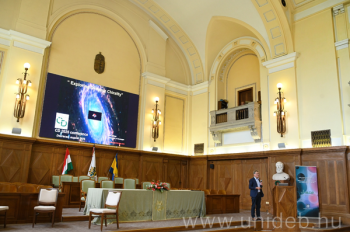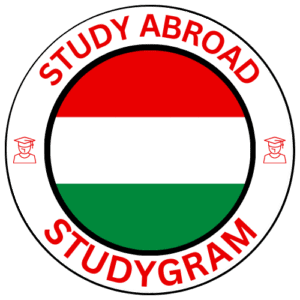
About the 20th International Conference on Chiroptical Spectroscopy
The University of Debrecen in Hungary recently staged the 20th edition of the International Conference on Chiroptical Spectroscopy, a bi‑annual forum that draws specialists in structural chemistry, spectroscopy and biochemistry from every continent. With distinguished speakers, hands‑on workshops and panel discussions, the conference offers a comprehensive view on how light‑based methods reveal the three‑dimensional architecture of chiral molecules – a topic that sits at the core of modern pharmaceutical design and material science.
Since its inception in 1985 in Sofia, the series has evolved from a regional gathering into a global platform. The University of Debrecen became only the third Hungarian institution to host the event, following Budapest’s 1987 and 2003 editions. The venue, Kenézy Villa, provided an inspiring backdrop for academic debate and networking sessions.
The Role of Chirality in Life and Chemistry
Chirality, the property that distinguishes left‑handed from right‑handed structures, is more than a chemical curiosity. It is the defining trait of biomolecules – DNA, proteins, and carbohydrates all exhibit a single optical signature in living organisms. The preference for a particular chirality is known as homochirality, and its significance extends to molecular recognition, metabolism, and drug efficacy.
Chiroptical spectroscopy, which interrogates how chiral substances interact with polarized light, is therefore a powerful tool for revealing structure in complex mixtures. Techniques such as electronic circular dichroism (ECD), vibrational circular dichroism (VCD), and Raman optical activity (ROA) provide a direct route from experimental spectra to detailed three‑dimensional models.
Biopolymers: DNA, Proteins, Carbohydrates
In the conference, Nobel laureate Bernard Feringa emphasized that the dominant forms of DNA helices, L‑amino acids, and D‑sugars are not random accidents. They are shaped by fundamental principles that are still being unraveled. Understanding these principles informs synthetic strategies that mimic biological systems – a field known as biomimicry.
Implications for Pharmaceutical Development
In drug discovery, the chirality of a molecule can mean the difference between a therapeutic agent and a toxic compound. Many marketed drugs are sold as a single enantiomer because the mirror image often shows reduced efficacy or adverse side effects. Chiroptical methods help medicinal chemists screen and confirm the purity of these stereo‑isomers, thus accelerating regulatory approval.
Highlights from Nobel Laureate Bernard Feringa’s Participation
Dr. Feringa’s keynote address reaffirmed the connection between fundamental chiroptical analysis and real‑world applications. He discussed recent advances in photo‑responsive molecular motors, a field that relies heavily on precise control of chirality. His insights sparked lively discussions about how these motors could be integrated into nanomachines for targeted drug delivery.
In addition to his oral presentation, Feringa participated in a moderated panel that explored emerging trends in spectroscopy instrumentation, from ultrafast laser setups to machine‑learning spectral interpretation. Graduate students noted that interacting directly with a Nobel laureate provided invaluable mentorship and networking opportunities.
Legacy and Growth of the Conference Series
Historically, the conference was founded under the guidance of pioneers such as Márton Kajtár, a stereochemist who organized the first event in Budapest. Over time, it evolved into a collaborative arena, highlighted by guest speakers like Professors Miklós Hollósy and Sándor Antus, both of whom contributed to the foundational literature on chiroptical spectroscopy.
The 20th edition celebrated not only scientific milestones but also paid tribute to Professor Koji Nakanishi, whose work on acoustic stethoscopy has influenced diagnostics. The University of Debrecen’s commitment to blending legacy with innovation was reinforced through the participation of Nakanishi’s former research group, who presented state‑of‑the‑art acoustic techniques linked to chiral biomolecules.
Opportunities for Students and Young Researchers
The conference showcased a number of award‑winning projects by doctoral candidates and post‑docs. Attendance offers early‑career scientists a chance to benchmark their research against international peers, access funding networks, and refine grant proposals. In particular, the University of Debrecen’s Faculty of Science and Technology highlighted the benefits of inter‑disciplinary collaboration between organic chemistry and materials science, demonstrating how chiroptical methods can be cross‑applied.
Students interested in the field can benefit from the following actionable steps:
- Register early for the next conference – early‑bird rates are available for students.
- Submit an abstract via the conference portal; ensure it outlines a clear hypothesis and experimental plan.
- Seek collaboration with a university laboratory that houses an ECD or VCD instrument; many universities release shared‑study time during off‑peak hours.
- Use open‑source spectral‑analysis software, such as OpenBabel or the newly released ChiroTools suite, to compare experimental data against theoretical models.
- Follow up on the post‑conference webinars that are often hosted by the conference organizers, covering advanced data‑driven approaches like chemometric analysis.
How to Get Involved: Attendee and Collaborator Pathways
For researchers and industry professionals looking to leverage chiroptical spectroscopy, the University of Debrecen offers multiple pathways:
- Apply as a speaker: Submit a full paper proposal to the conference committee and demonstrate how your methodology advances the field.
- Partner with the university: Establish a joint research grant with the Faculty of Science and Technology, focusing on industrial applications such as chiral drug synthesis or optical material development.
- Conduct a workshop: Propose a hands‑on session that introduces students to instrument operation, enabling them to generate reproducible spectra.
- Support student scholarships: Institutions can sponsor travel and accommodation costs for bright students, fostering a pipeline of future experts.
These collaborations not only enhance scientific output but also align with Hungary’s strategic goals for expanding its research export capacity.
Future Prospects and Why the University of Debrecen Matters
Looking ahead, the University of Debrecen plans to integrate its own research laboratory onto an international platform by hosting the 22nd International Conference on Chiroptical Spectroscopy next decade. This initiative aligns with global trends where multidisciplinary approaches are key to solving complex chemical challenges, such as sustainable synthesis of chiral polymers and environmentally benign pharmaceutical manufacturing.
The university’s commitment to high‑quality education, combined with cutting‑edge research, positions it as an attractive destination for both domestic and international scholars. The emphasis on practical training, paired with access to world‑class instrumentation, equips graduates with marketable skills in emerging sectors like personalized medicine and nanotechnology.
In summary, the 20th International Conference on Chiroptical Spectroscopy illustrated how fundamental science on the imprint of life can be translated into transformative technologies. The University of Debrecen, by bringing Nobel laureate Bernard Feringa to the fore, underscored its role as a nexus for academic excellence, industry partnership, and future‑oriented research.
Call to Action 1: Submit your research abstract for the next conference and join a global community of chiroptical scientists.
Call to Action 2: Schedule a free consultation with the Faculty of Science and Technology to explore potential research collaborations.
Call to Action 3: Apply for the University of Debrecen’s student scholarship program and broaden your exposure to international spectroscopy.

